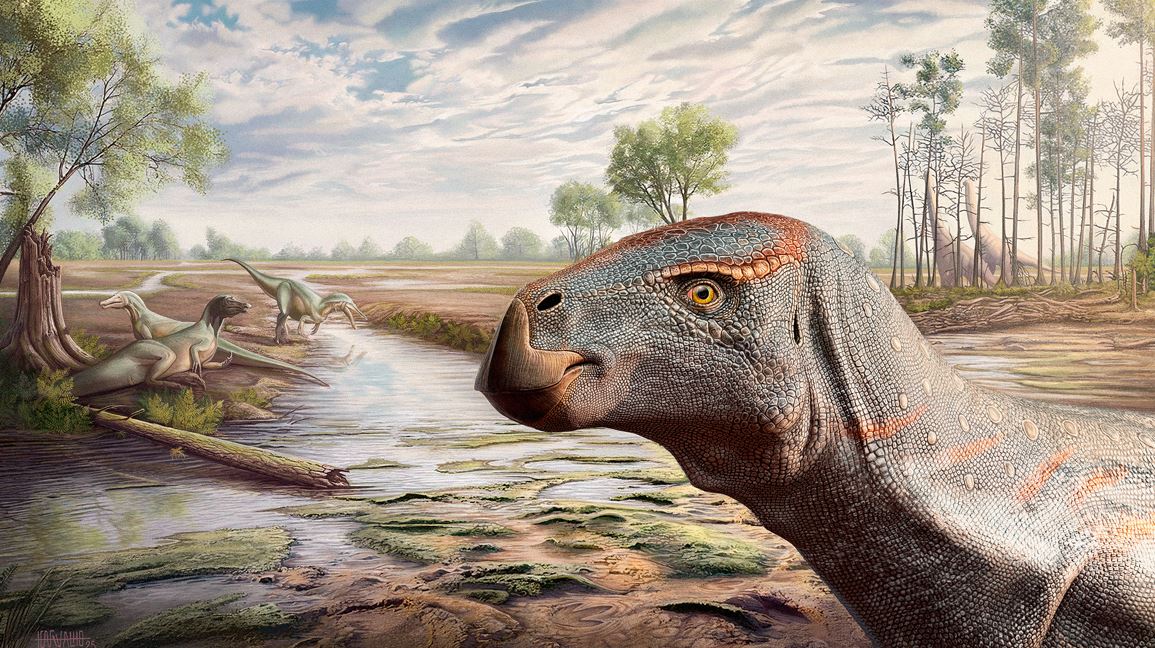New dinosaur skull identified by DER researchers as the first Cretaceous iguanodont from Portugal

Torres Vedras (Portugal), August 15, 2025 – Filippo Bertozzo, from the Royal Belgian Institute of Natural Sciences and the Centre of Paleobiology and Paleoecology (Ci2Paleo) of the Natural History Society of Torres Vedras (SHN), together with an international team of researchers, including from DER and CERENA, has described a new species of iguanodont dinosaur named Cariocecus bocagei, published today in the prestigious international journal Journal of Systematic Palaeontology.
An exceptionally well-preserved skull, discovered in 2016 at Praia da Área do Mastro (Sesimbra), revealed a new herbivorous iguanodont species that lived 125 million years ago, during the Early Cretaceous.
Named Cariocecus bocagei, the species honors an ancient Lusitanian deity and the Portuguese naturalist José Vicente Barbosa du Bocage. This is the most complete dinosaur skull ever found in Portugal, now housed at the Natural History Society of Torres Vedras.
The fossil stands out for its unique cranial features, including the fusion of the jugal bone with the maxilla, an adaptation likely reinforcing its chewing ability. Its three-dimensional preservation also allowed a digital reconstruction of the brain, cranial nerves, and inner ear, providing unprecedented insights into the sensory capacities and evolutionary history of hadrosauroids.
According to the researchers, this discovery places Portugal as a key location for understanding the evolutionary transition between Jurassic herbivorous dinosaurs and the more advanced Cretaceous iguanodonts, even suggesting a Euro-African rather than Asian origin for the group.
